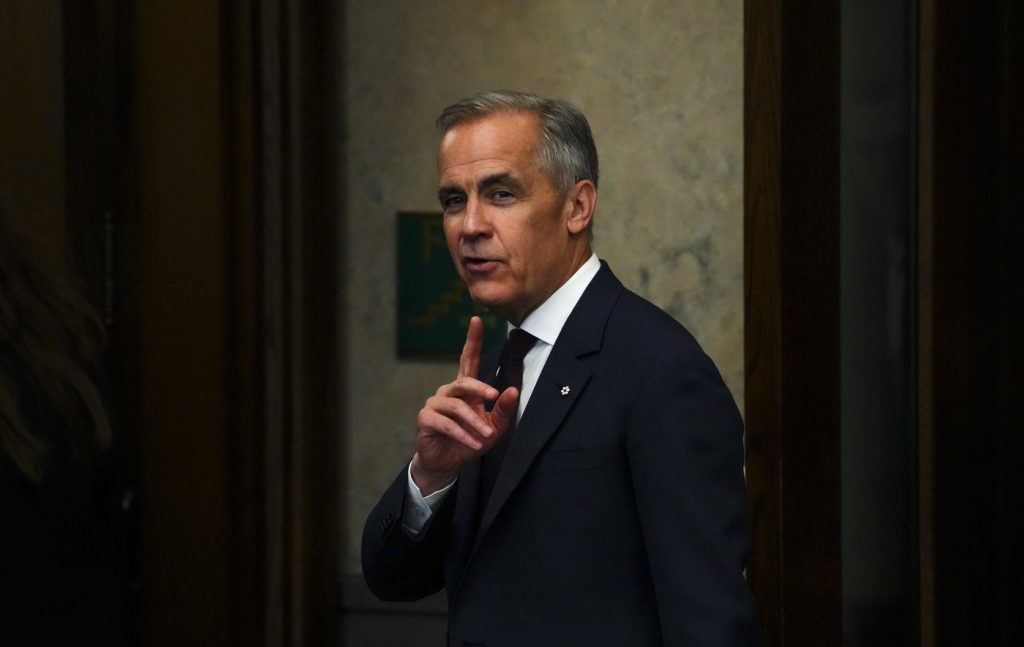Canada’s economy grew 2.2% annualized in Q1 as businesses raced to beat tariffs

Posted May 30, 2025 2:00 am.
Last Updated May 30, 2025 8:31 am.
A rush to get ahead of Canada’s looming tariff dispute with the United States powered economic growth in the first quarter, Statistics Canada said Friday.
Real gross domestic product rose 2.2 per cent annualized in the three-month period, the agency reported, up a tick from 2.1 per cent in the fourth quarter.
Annualized real GDP figures for the final quarter of 2024 were revised down by half a percentage point, StatCan said, and other quarters from last year were also adjusted in Friday’s release.
The first quarter figures topped StatCan’s flash estimate for annualized growth of 1.5 per cent and beat calls for 1.7 per cent from a Reuters poll of economists.
Some economists said the surprisingly strong GDP results suggest the Bank of Canada will keep its benchmark interest rate on hold at its decision next week.
Money markets priced odds of an interest rate hold on June 4 at over 80 per cent as of Friday morning, according to LSEG Data & Analytics.
Threats of tariffs from the United States suffused the first quarter for Canada’s economy, particularly for the trade-sensitive automotive industry and steel and aluminum sectors.
Those import taxes and Canada’s retaliatory tariffs were initially applied in early March, though each have since faced a variety of adjustments and exemptions.
StatCan said that fears around the looming trade war inspired both Canadian importers and exporters to rush to get ahead of tariffs.
Goods exports were up 1.6 per cent in the first quarter, StatCan said, driven by increased shipments of passenger vehicles and industrial machinery and parts. Non-farm businesses were also building up their inventories, reversing withdrawals from the previous quarter and pushing GDP higher.
Hampering growth was the uptick in imports and a slowdown in housing resale activity.
Ownership transfer costs, which represent resales, were down 18.6 per cent quarterly – the largest drop in roughly three years.
Rates of household spending and saving were both slowing meanwhile in the first quarter amid weaker income gains, the agency said.
BMO chief economist Doug Porter said in a note to clients that despite the strong headline figures, the details of the Q1 GDP print are less rosy on closer examination.
Final domestic demand, which strips out inventories and net exports, was down 0.1 per cent annually in the first quarter, he noted.
Figures for March show growth of 0.1 per cent in real GDP, rebounding from a slight contraction in February, amid a boost in mining, quarrying and oil and gas extraction.
StatCan’s advance estimates see the economy also growing 0.1 per cent in April despite what it expects was a fourth consecutive monthly decline in the manufacturing industry.
Porter said the April expectations for a gain, while modest, are “amazingly resilient” given pressure from the trade dispute.
The Bank of Canada will be parsing the GDP figures closely ahead of its interest rate announcement set for June 4.
The central bank tends to keep its policy rate elevated when it’s worried about inflation resurging and lowers it when the economy needs a boost, but both are at risk amid the United States’ upending of global trade.
The Bank of Canada hit pause on any changes to its policy rate at its last decision in April, saying at the time it needed more information on how tariffs were going to unfold and impact the economy.
Porter said that economists can “quibble” about the details, but the GDP figures so far in 2025 are showing “no obvious distress signals” for the Canadian economy.
“With this sturdy set of results, we are officially abandoning our call of a rate cut next week, and now look for the next rate trim eight weeks hence at the late-July decision,” Porter wrote.
Despite the first-quarter strength, RSM Canada economist Tu Nguyen said she expects the economy will contract in the second quarter. Trade uncertainty will stall investments and household spending, she argued, and will also keep the housing market chilled.
Nguyen said the Bank of Canada may opt to keep its policy rate steady at 2.75 per cent, however, with the surprise jump in GDP and signs of rising core inflation.
RBC economists Nathan Janzen and Abbey Xu wrote in a note that the rate decision will be a “close call,” but a second consecutive hold looks more likely than a cut.








